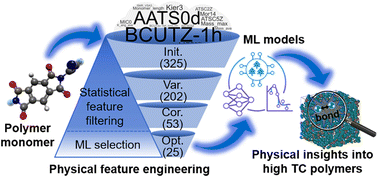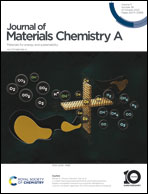High-throughput screening of amorphous polymers with high intrinsic thermal conductivity via automated physical feature engineering†
Abstract
The informatics algorithm-driven approach overcomes the high-cost and time-consuming drawbacks of conventional trial-and-error procedures and enables efficient exploration of polymers with desired properties. Intrinsically thermally conductive polymers are highly in demand for effective thermal management of energy devices, flexible electronics and power modules, from the perspective of heat dissipation, operation reliability, and service lifetime of the devices. However, since most polymers are thermally insulating, the exploration of intrinsically thermally conductive polymers and understanding the relationship between molecular structures and thermal conduction are essential yet challenging tasks. In this work, we proposed and developed a hybrid framework that combines automated physical feature engineering and symbolic regression for exploring amorphous polymers with desired thermal conductivity. The feature engineering approach constructed 325 initial physical descriptors based on information from atoms, electrons, and charges in monomers, together with bond and non-bond interactions in amorphous systems. 25 optimized descriptors are finally figured out through statistical coefficient filtering and machine learning model selection. The relationship between the macromolecular structure and thermal conductivity was established with high accuracy, which outperforms other molecular representations of Morgan fingerprints, molecular access systems, and the dimensionality reduction technique of principal component analysis. Machine learning models based on optimized descriptors recommended 104 polymer candidates with good thermal conductivity out of over 790 000 polymers, of which 54.8% have thermal conductivities above 0.35 W m−1 K−1, significantly higher than those found in the training dataset. Furthermore, the feature importance ranking coupled with the explicit analytical models fitted by symbolic regression suggests that the conjugated molecular structure, chain stiffness, and maximum relative atomic mass in polymers have a strong influence on thermal conductivity. Our proposed approach provides a valuable tool for effectively exploring the relationship between macromolecular structures and thermal properties.

- This article is part of the themed collection: #MyFirstJMCA


 Please wait while we load your content...
Please wait while we load your content...